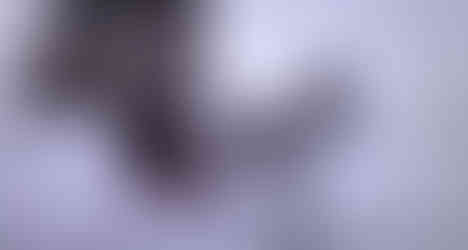Visually stunning “Days of Heaven” on 4K from Criterion
- Bill Kelley III

- Dec 8, 2023
- 4 min read
4K ULTRA HD REVIEW / HDR FRAME SHOTS
Richard Gere and Brooke Adams play soulmates and brother (Bill) and sister (Abby) in Terrence Malick’s “Days of Heaven.” The wealthy farmer played by first-timer Sam Shepard falls for Abby and the twisted tale takes form.
(Click on an image to scroll through the larger versions)
“DAYS OF HEAVEN” – THE CRITERION COLLECTION
4K Ultra HD & Blu-ray; 1978; PG for profanity
Best extra: A 40-page booklet by writer Adrian Martin and cinematographer Nestor Almendros
FOR 50 YEARS Terrence Malick, former M.I.T. philosophy professor turned filmmaker, has considered each of his works’ poetry in motion, richly photographed and poignant. But, for most of his career, he’s been silent publicly – which hasn’t stopped many who still consider him a genius. Others say he’s a pompous … you know what. Still, whatever you think, he ranks up there as one of America’s greatest directors.
A graduate of the American Film Institute with fellow students David Lynch (“Mulholland Drive,” “Lost Highway”) and Paul Schrader (“Taxi Driver,” “First Reformed”), Malick became part of the 1970s New American Cinema – “pointed with the reworking of movie formulas and debunking of social myths,” writes film critic Adrian Martin in his enclosed essay. For nearly four decades, Malick only directed five movies: “Badlands” (1973) an adaptation of real-life teen killers Charles Starkweather and Caril Fugate; “Days of Heaven” (1978) the focus of this review; “The Thin Red Line” (1998) based on James Jones’ World War II account of the Guadalcanal campaign in the South Pacific; “The New World” (2005) explored the British expedition of Virginia in 1607, and “The Tree of Life” (2011) examined life through a Texas family who lost their middle child.
But, in the last decade, he also directed a handful of lesser works – except for the visually absorbing “A Hidden Life” (2019) that further confirmed his examination of faith, beliefs, and sacrifice.
Chicago to the Prairie
PLOT/STORY
Back in 1976, “Days of Heaven” was filmed in the wheat fields of Alberta, Canada, which subbed for the Texas Panhandle during the days before World War I. His screenplay has an Old Testament biblical quality. The story follows the lines of Abraham and Sarah when the Hebrew leader tells the Egyptian pharaoh that Sarah, his wife, is his sister. Malick’s love triangle involves Bill (Richard Gere) and his soul mate Abby (Brooke Adams), both laborers for a farmer (Sam Shepard) who lives alone in a huge Victorian mansion. The farmer falls for Abby and a twisted tale takes form.
Bill’s little sister (Linda Manz) provides Malick’s trademark voice narration throughout this visual masterpiece from cinematographers Nestor Almendros (“Kramer vs. Kramer,” “Sophie’s Choice”) and Haskell Wexler (“In the Heat of the Night,” “Bound for Glory”). Almendros had to leave the project after 53 days of shooting because of a prior commitment. Malick’s solution? Bring in Wexler, an Oscar winner in his own right, who filmed the final 19 days.
VIDEO
The original 35mm camera negative was scanned in 4K and restored with Malick supervising the project. The results are staggering compared to the old 2K Criterion Blu-ray, which was strangely not upgraded with the new master. Overall, the 4K disc clarity provides more visual depth, sharpness, and a nice wash of organic film grain. With 70-plus Megabits per second encoded video onto the 100 GB disc, the video from start to finish is fully resolved for an outstanding cinematic experience. The HDR10 peak brightness hits 1333 nits and averages 97 nits.
The HDR10 and Dolby Vision grading also produce a more natural color palette without the heavy red tint that plagued the 1080p disc. Still, the majority of the footage was captured during ‘magic’ hour – the time of day just before sunset. Malick and his cinematographers enjoyed shooting in the higher latitudes of Canada, where those golden tones seemed to last forever. Another positive, Malick wasn’t discouraged by the lack of light. “He loves the lack of light. He understood the parameters of the film stock better than anyone. Better than Wexler, and even better than Kodak,” editor Billy Weber says in the commentary.
The Farmer & Abby
AUDIO
The six-channel DTS-HD soundtrack was remastered from the original five-channel magnetic track, providing a wider and fuller soundstage. The score comes from Ennio Morricone (“The Mission,” “The Good, The Bad and the Ugly”), while the brief title sequence delivered over a series of vintage photographs uses Saint-Saëns’ “Carnival of the Animals.”
EXTRAS
The carry-over Blu-ray includes interviews from Wexler and camera operator John Bailey. Both give insights into Malick’s filming process, which also involved using a handheld camera. Bailey calls it “America’s New Wave,” based on a style from the French cinema. “Days of Heaven” won the Oscar for Best Cinematography. There’s also a 20-minute interview with Richard Gere, who recalls a handful of stories including his crush on co-star Brooke Adams.
In a second conversation with the late Sam Shepard recorded in 2002, he says, “Terry’s [Malick] films aren’t not so much intellectual but visceral. I don’t know how to explain it, but they are like poems.” He also remembers how Malick was so shy he was embarrassed to ask Shepard, who at the time was only known as a playwright, about the possibility of taking on the role of the farmer. It became his first major on-screen performance. But, in 1979, Shepard won the Pulitzer Prize for his play “Buried Child.”
To top it off, the disc also includes a commentary with the art director, costume designer, casting director, and editor Billy Weber, who spent two years cutting the film with Malick, getting it to its final 94-minute running time.
Don’t miss one of the most beautiful motion pictures ever – especially on Criterion 4K.
— Bill Kelley III, High-Def Watch producer












































Comments